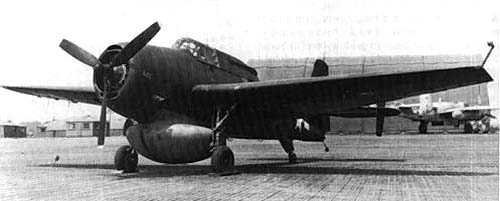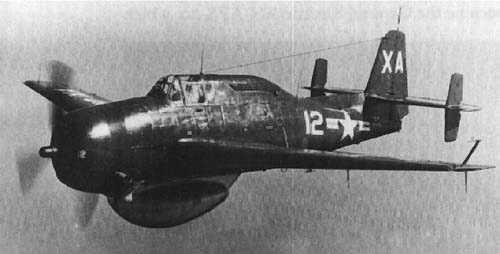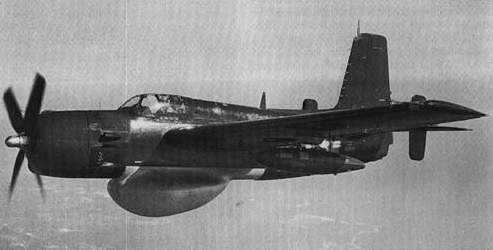THE PROJECT CADILLAC

The US Navy really wanted this capability. Jerome B. Weisner
was put in charge of the effort, which was named "Project Cadillac",
after Cadillac Mountain in Maine, where the sun first rises on the United
States every morning. The project grew massively, ultimately soaking up
20% of the Rad Lab's staff, as well as 12% of the lab's outside purchases
for its entire existence. The Navy also contributed 160 officers and men.
Putting a radar on an aircraft was almost the least of the problem. There
was the issue of ensuring proper IFF in the large numbers of air and sea
targets on the radarscope, and the extremely difficult issue of considering
what to do with the information obtained by the radar. The idea of having
a operator on board the aircraft radio the floods of information picked
up on the PPI to users on the ground was obviously confusing and impractical.
RCA had been ready to introduce television just before the war broke out,
and provided a TV system that was used to relay the PPI display to a surface
station. The normal amplitude-modulated TV signal transmission scheme
didn't prove adequate, and so Zenith Radio designed a frequency-modulated
TV transmitter system. By May 1943, Rad Lab engineers were able to receive
useful PPI images sent by an aircraft to a ground station.
Since the PPI display was centered around the aircraft, not the ship that
received the image, the relative locations of the aircraft and ship had
to be precisely determined using radar beacons. The high-flying aircraft
would also serve as a radio relay for command communications; as long
as the Navy had a tall tower, they might as well make the best use of
it.
The Project Cadillac team was organized into five sections: shipboard
system; airborne system; airborne radar; radar transmitter; and beacons
and IFF. System elements were in place by early 1945, and the system began
flight evaluations in April. By this time, the project's priority had
been raised even further. Japanese "kamikaze" suicide aircraft
attacks had inflicted major damage on US Navy ships, and Project Cadillac
promised to deliver a bigger and tighter
screen against the attackers.
The radar element of the system was the "AN/APS-20" X-band radar,
which was fitted to Grumman TBM Avenger torpedo-bombers. As mentioned
in an earlier chapter, the TBM had carried the first operational American
airborne radar, the ASB.
The converted TBM, designated "TBM-3W", was stripped of armament,
armor, and bombing gear, then fitted with a big radome between the main
landing gear for the AN/APS-20's rotating antenna. The radome gave the
aircraft a "pregnant" appearance, and additional "finlets"
had to be added to the outboard section of each horizontal tailplane to
keep the aircraft flying straight.
The aircraft was littered with various small antennas for other elements
of the system, including two VHF radios, IFF interrogator, and the television
relay. Although the PPI imagery was relayed to the CIC on board an aircraft
carrier or other vessel, it was also monitored by two operators on board
the machine.
About 40 TBM-3W conversions were performed, but the system was still in
evaluation when the war in the Pacific ended, and did not enter service
until 1946. It was still the very first "airborne early warning (AEW)"
aircraft.
The Navy was impressed enough by the TBM-3W that they also had the AN/APS-20
fitted to the land-based Boeing B-17 Fortress bomber, which was given
the designation "PB-1W". The PB-1W provided greater range and
endurance than the TBM-3W and could operate far more autonomously.
The AN/APS-20 radar would have a peculiarly long life. It was fitted to
a number of other aircraft in the 1950s, most significantly a variant
of the Douglas Skyraider carrier-based attack aircraft, the "AD-3W".
The AN/APS-20, with some enhancements, remained in first line service
until the early 1960s.
It appears that radar technology reached a sort of evolutionary "plateau"
in the postwar period. It was still being improved and used in new applications,
but the rate of progress was nothing like the incredible explosion of
technology seen during the war. Radar didn't really take another big step
forward until the 1960s, when digital circuitry and then computing power
was integrated with radar sets, giving them intelligence that allowed
them to be much more capable and less magical to operate.
However, the AN/APS-20 remained in service with the British for most of
the rest of the century. The British Royal Navy obtained the AD-3W Skyraider
for operation off their own carriers. In the late 1950s, as the Skyraiders
were being retired from British service, the Royal Navy decided to adapt
their Fairey "Gannet" antisubmarine aircraft to the AEW role,
modifying the design and fitting them with AN/APS-20 sets scavenged from
the British Skyraiders to create the "Gannet AEW.3".
The Gannet AEW.3 served well into the 1960s. When it was retired, the
British were in desperate need of an AEW capability, and in 1971 they
scavenged the AN/APS-20 sets again, fitting them to existing Avro Shackleton
ocean patrol aircraft. The Shackleton was every bit as much an antique,
a four-piston engine aircraft that was a derivative of the World War II
Avro Lancaster bomber.
The result was the "Shackleton AEW.2". Twelve were converted
and served with the RAF in support of the Royal Navy. The Shackleton AEW.2
was an embarrassment, a flying museum piece, and the only good thing that
could be said about it was that it was better than nothing.
It was supposed to be a temporary fix while the British developed the
advanced "Nimrod AEW" aircraft, but that program proved terminally
"snakebitten", leading to seemingly endless delays until it
was finally cancelled. The British were finally forced to obtain a US
solution, the Boeing "Sentry E-3D Airborne Warning & Control
System (AWACS)".
The British got their E-3Ds in the early 1990s and were finally able to
retire their exhausted Shackletons. The E-3D was a state-of-the-art machine
that was the descendant through several generations of the Project Cadillac
Avenger TBM-3W. The RAF jumped through decades of improvement in a single
breathtaking step.
|



